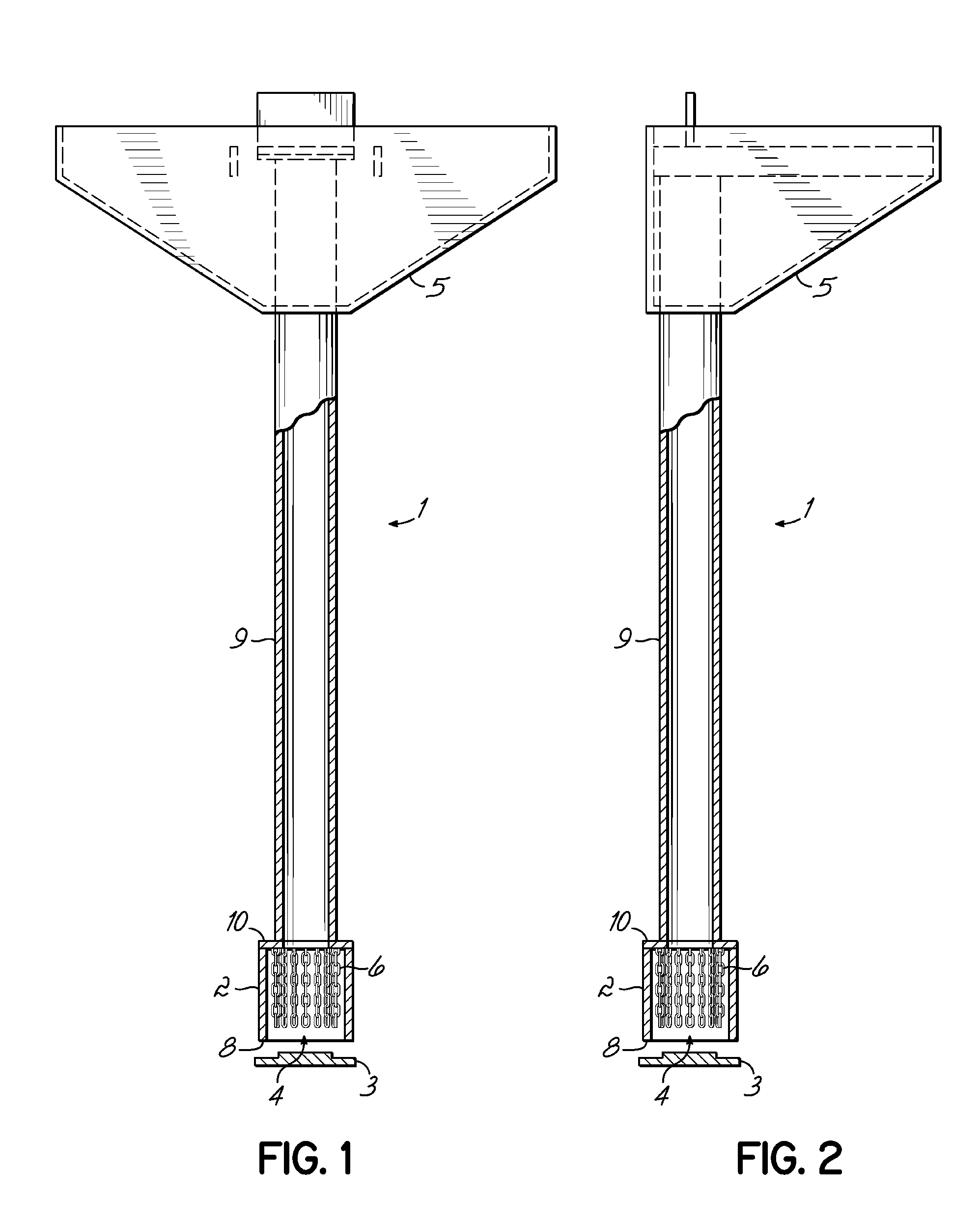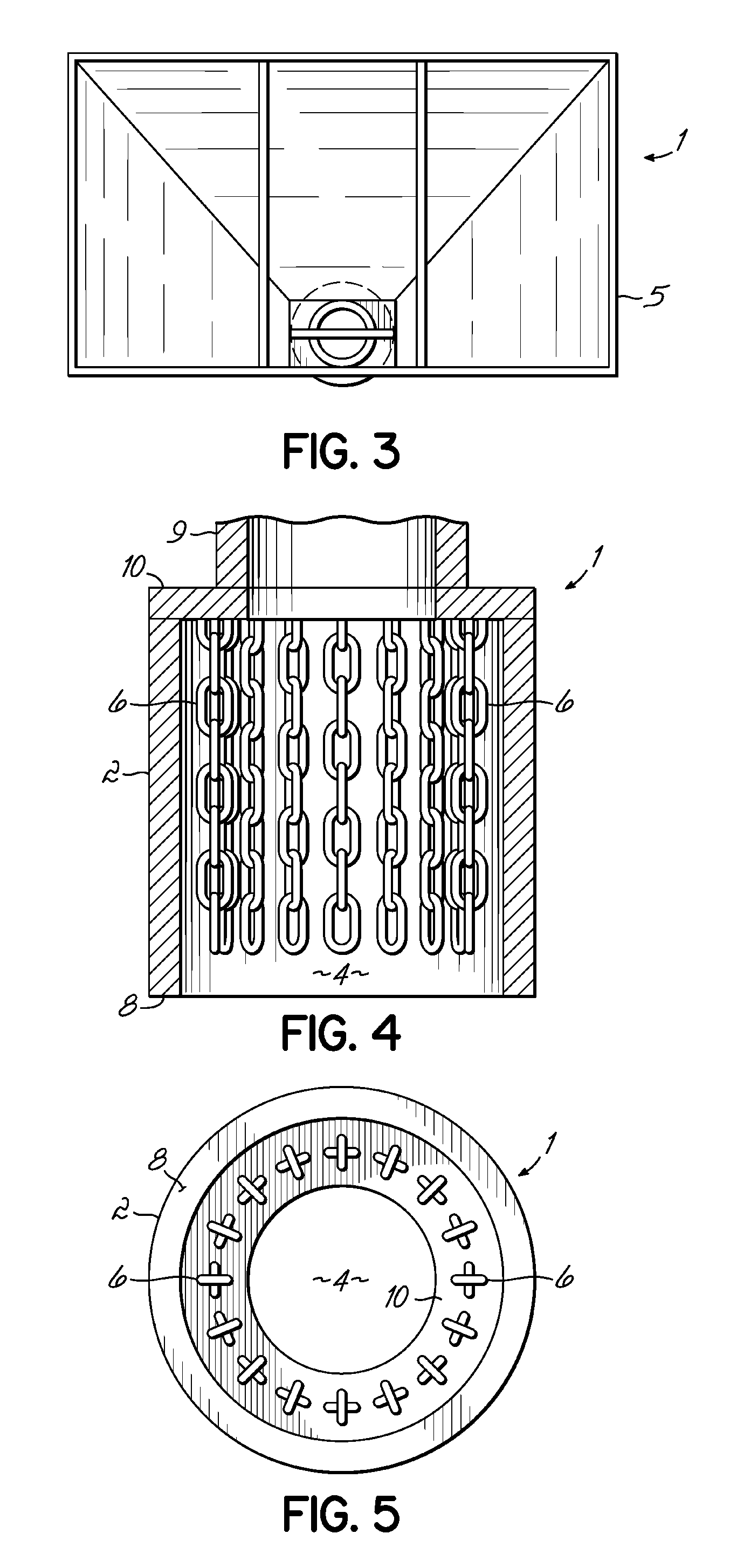Method and apparatus for creating support columns using a hollow mandrel with upward flow restrictors
a technology of restrictors and mandrels, which is applied in the direction of bulkheads/piles, construction, foundation engineering, etc., can solve the problems of material pushed up into the mandrel, achieve the effect of preventing upward flow of aggregate, facilitating the construction of stronger and stiffer piers, and clogging the mandrel
- Summary
- Abstract
- Description
- Claims
- Application Information
AI Technical Summary
Benefits of technology
Problems solved by technology
Method used
Image
Examples
example
[0060]FIG. 18 shows test results for two piers, one constructed using a method similar to that described in U.S. Pat. No. 7,226,246 and one constructed using the invention. Both piers were built using mandrels with 14 inch diameter heads and using the 3 foot up and 2 foot down method (as described hereinabove). The graph of FIG. 18 shows that the pier constructed with a mandrel such as that of FIGS. 1-10 is stiffer than one constructed using a system such as that of U.S. Pat. No. 7,226,246. More particularly, the graph shows top-of-pier stress on the x-axis with top-of-pier deflection on the y-axis. Volume measurements made during construction showed that the average pier diameter using the system in accordance with the invention was 20% greater than that using the system of the referenced U.S. Patent.
[0061]In conducting the tests, the aggregate used for both systems for the modulus load test pier consisted of crushed limestone gravel having a nominal particle size ranging from abou...
PUM
 Login to View More
Login to View More Abstract
Description
Claims
Application Information
 Login to View More
Login to View More - R&D
- Intellectual Property
- Life Sciences
- Materials
- Tech Scout
- Unparalleled Data Quality
- Higher Quality Content
- 60% Fewer Hallucinations
Browse by: Latest US Patents, China's latest patents, Technical Efficacy Thesaurus, Application Domain, Technology Topic, Popular Technical Reports.
© 2025 PatSnap. All rights reserved.Legal|Privacy policy|Modern Slavery Act Transparency Statement|Sitemap|About US| Contact US: help@patsnap.com



